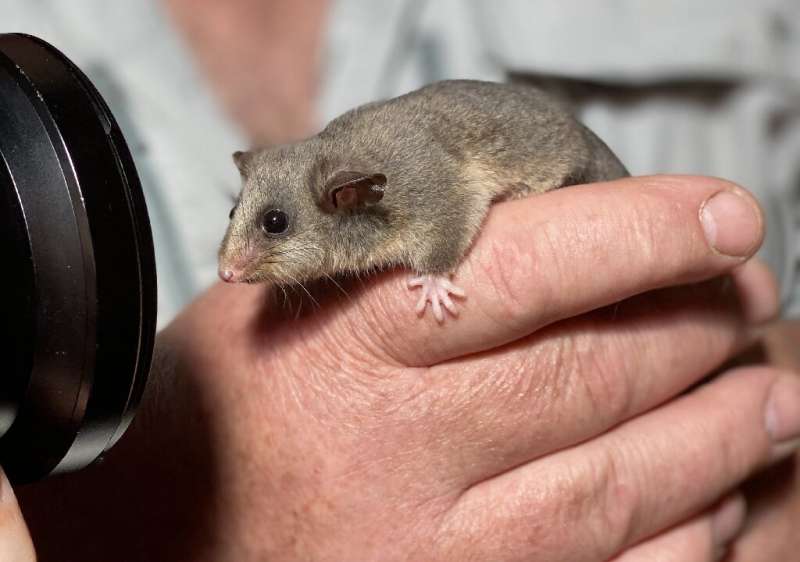Aussie researchers mount rescue bid for endangered pygmy possum

Climate change is threatening to wipe out Australia's critically endangered mountain pygmy possum, but researchers are hoping to save the hibernating species by relocating the last remaining mammals to cooler lowlands.
The tiny mammal lives in alpine regions but less than 2,500 remain in the wild, according to estimates, with winter snowfall declines and warmer weather threatening extinction.
The possums hibernate deep inside humid rock piles that are insulated by snow during winter and provide shelter from high summer temperatures that can prove fatal.
The species—Australia's only hibernating marsupial—needs temperatures to hover just above freezing to hibernate successfully, but without enough snow the cold air outside penetrates the rocks and chills the atmosphere inside, University of New South Wales (UNSW) associate lecturer Hayley Bates said Monday.
"Anything less than 0.6 Celsius will wake them from their hibernation and they can shiver and starve to death," she added.
"You just need two bad winters like this and the species could collapse."
Scientists at UNSW have started a breeding program in a lowland area of New South Wales state in an attempt to acclimatise the possums to a new home, with hopes of establishing an inital colony of 25 animals.
More of the marsupials could be moved from their alpine habitat if the project is successful.
Based on analysis of ancient fossils dating back 25 million years, they believe the mountain pygmy possum's ancestors lived in a more temperate and less extreme environment than it endures today.
Research also showed that other closely related possums had long lived in settings such as lowland rainforests, said UNSW palaeontologist Mike Archer.
"What probably happened is that the modern species followed cool rainforest which invaded the alpine areas during a period of relatively warmer, lush conditions," he added.
"After these conditions deteriorated with further climate change, they were stranded in an environment that was at the extreme end of their adaptability."
The mountain pygmy possum is also under pressure as numbers of its primary post-hibernation food source—the bogong moth—are dwindling, apparently also due to climate change and drought.
If the project is successful, scientists hope other endangered Australian animals could be rescued in a similar way, including the Corroboree frog and the swamp tortoise.
© 2019 AFP

















